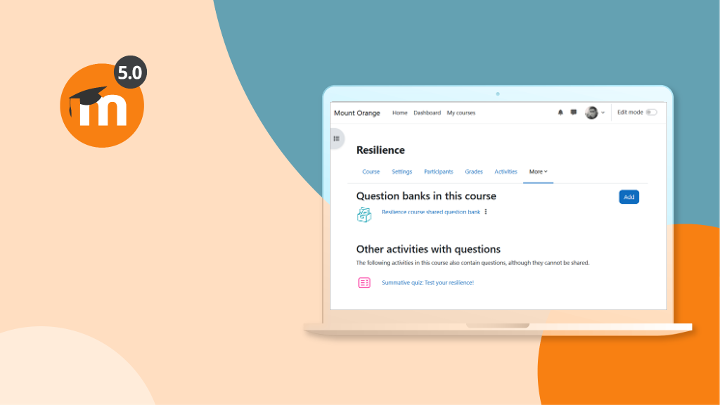In many organisations, valuable training content is quickly forgotten by employees. Research on memory shows that humans forget roughly 70% of new information within a day and up to 90% within a week if there’s no reinforcement1. This “forgetting curve” means much of your training investment can evaporate unless you take steps to make learning stick1. How can HR and L&D professionals ensure that skills and knowledge gained in training sessions actually translate into lasting workplace improvements? This article explores strategies to boost knowledge retention and make corporate training truly stick.
Why Training Tends to Fade
New skills and knowledge can fade fast after a training event. Without application or review, employees naturally revert to old habits. Factors like lack of practice, no follow-up, and irrelevant content all contribute to forgetting. If learners don’t see immediate relevance, their brains may treat the material as non-essential and let it slip. The cost is high – not only in wasted training spend, but in lost productivity and missed opportunities for growth. A corporate study found learners forget the majority of training within days, underscoring the need for deliberate reinforcement.
Managers and L&D leaders must recognise that training is not a one-off event but a process. The goal is long-term behaviour change, not just a temporary knowledge boost. By understanding why training fades (e.g. cognitive overload, lack of engagement, no real-world context), we can design learning programs that combat those issues. The good news: with the right techniques, the forgetting curve can be flattened and training ROI dramatically improved.
Strategies to Boost Retention
To make training stick, consider these proven strategies that blend learning science with practical reinforcement:
- Active Learning and Practice: Encourage employees to apply new skills immediately on the job. For example, after a software training, assign a project that uses those features that same week. Active application cements knowledge far better than passive listening. Hands-on practice and “learning by doing” create neural connections that endure.
- Spaced Repetition: Instead of one-and-done training, reinforce key points over time. Spacing out learning – via follow-up sessions, quizzes, or reminder modules – helps combat memory decay. Even brief refresher e-learning a week or two after training can significantly improve retention. Regular reinforcement signals to the brain that this knowledge is important and should be retained.
- Microlearning Boosters: Use microlearning to reinforce and revisit content in bite-sized pieces. Short quizzes, tip sheets, or 3-minute videos can recap core concepts from a workshop. These quick bursts fit into busy schedules and keep the material fresh. Microlearning reinforcement is especially effective given employees’ limited attention spans and can be delivered through an LMS or even mobile notifications.
- Peer Discussions and Teach-Back: Facilitate peer learning opportunities. After a training, organise a short discussion group or ask participants to explain one new concept to their team. Teaching others is a powerful way to solidify one’s own understanding. It also creates a culture where learners continuously share and revisit knowledge, rather than treating training as isolated events.
- On-the-Job Aids and Reminders: Provide job aids, checklists, or quick-reference guides that employees can refer to back on the job. These tools help bridge the gap between the training environment and real work application. For instance, a sales training might be followed up with a one-page summary of key steps, or an infographic posted in the office as a visual reminder of best practices.
- Make it Relevant and Engaging: Adults retain information better when it’s relevant to their role and presented in an engaging way. Tailor training content to real job scenarios. Use stories, case studies, and interactive elements so that learners are emotionally and intellectually invested. When learners find training memorable and see clear utility, they are more likely to remember and use it.
By integrating these strategies, companies can significantly improve knowledge retention. Continuous learning – small ongoing efforts versus one big push – is the mantra for making training stick. Each reinforcement activity might seem minor, but together they compound to keep the learning alive.
The Role of Technology and Tools
Platforms like Moodle Workplace play a crucial role in reinforcing training. For example, Moodle Workplace allows you to automate follow-up activities: you can schedule reminder quizzes or send weekly microlearning lessons to training participants. The platform can track who has completed refresher modules and who might need additional support. These data-driven insights help L&D managers intervene before skills are lost.
In addition, Moodle Workplace supports social learning features where employees can discuss and collaborate on learning topics. By having forums or chat groups dedicated to a training topic, learners can ask questions, share experiences, and continuously engage with the material post-training. This kind of collaborative reinforcement is invaluable in keeping knowledge fresh.
Another tech tool to consider is gamification: Moodle Workplace (and other LMSs) enable gamified elements like badges or points for completing reinforcement activities. A bit of friendly competition or reward can motivate employees to participate in follow-ups that solidify their skills.
Measurement is also key. Use your LMS’s analytics to see if reinforcement is working – for instance, compare skill assessment scores immediately after training and again a month later. If you see a drop-off, it’s a sign to increase post-training touchpoints. With data, you can continuously tweak your strategy to ensure training is truly sticking.
Conclusion and Next Steps
Don’t let your training efforts go to waste. By understanding the science of retention and deliberately reinforcing learning, you can transform one-time training events into lasting performance improvements. Start building reinforcement into your L&D programs from day one – your employees (and your bottom line) will thank you when they retain and apply new skills effectively.
Call to Action: Ready to boost your organisation’s learning retention? Moodle Workplace provides the tools to reinforce and personalise training for maximum impact. Contact My Learning Space to discover how we can help you implement a reinforcement-focused training strategy and ensure your employee training truly sticks. Let’s turn learning into lasting results!







